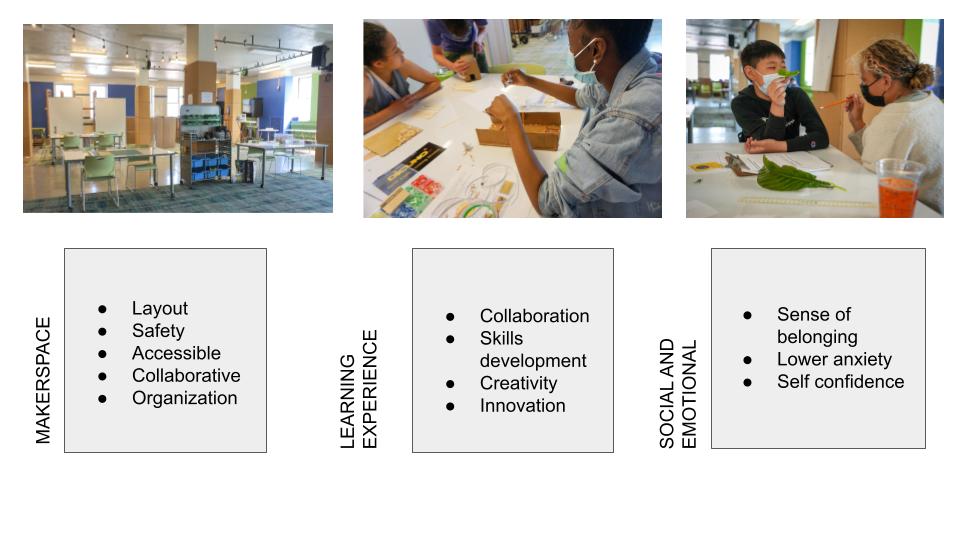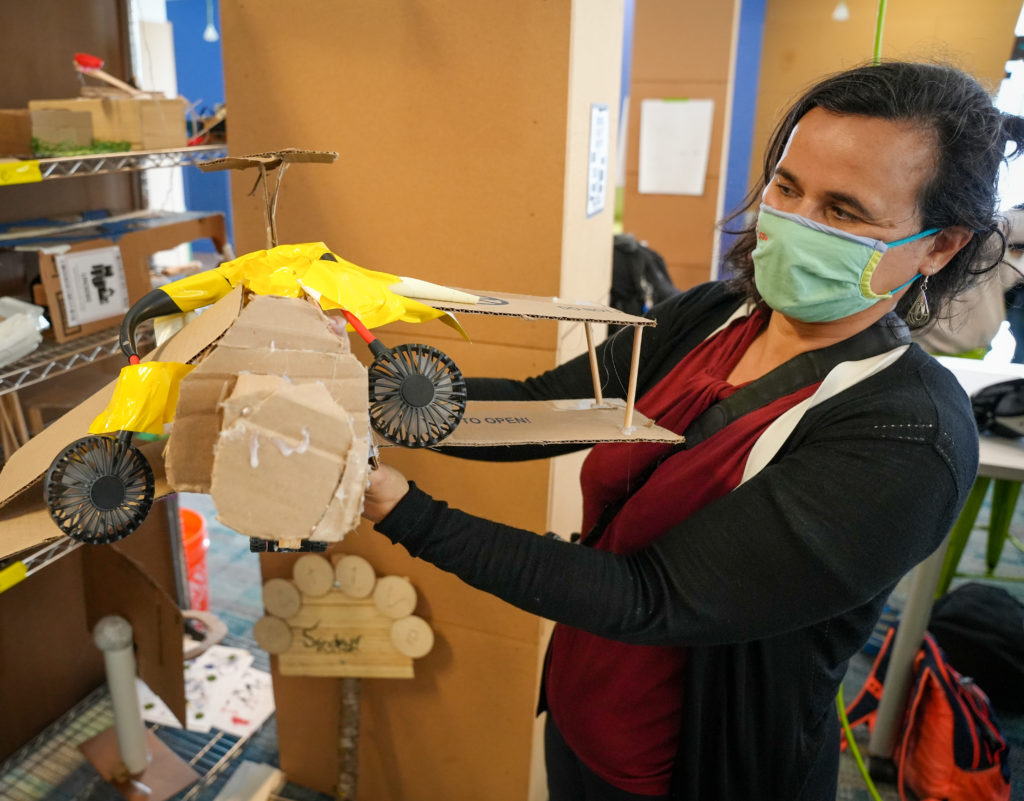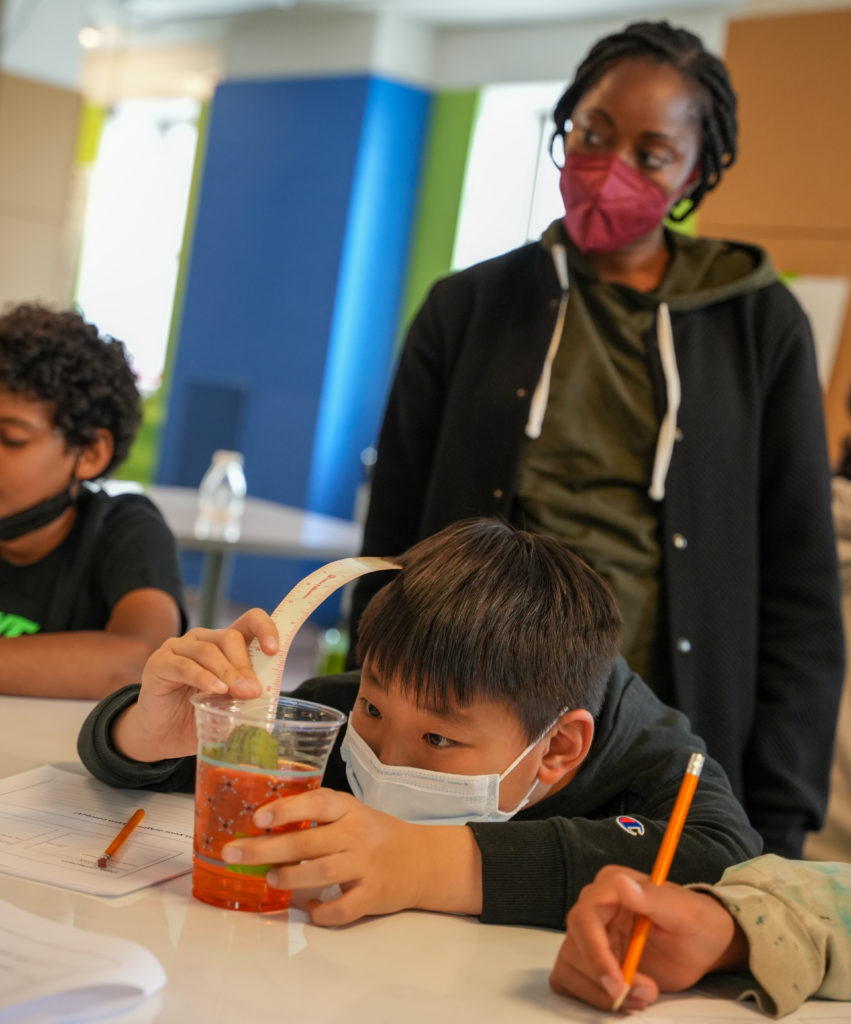Designing a space where all students feel they belong has the potential to restore hope in building communities that foster relationships between all people by learning to have conversation across differences. It is a space where students’ self esteem is developed through their ability to bring their full self and to express their own interest and creativity fully. When students can commit to a space that invites their own full self and where they feel valued, then they can learn how to engage in problem solving strategies through projects that matter to them. An inclusive space is inviting to all group members of the school community. The diversity of perspective leads to more innovative solutions but also will address the lack of diversity in certain majors where the percentage of women for example in STEM is well below the national average for all majors.

A variety of articles and books have been published recently on the importance of designing for belonging stressing the importance of creating community connections and environments that facilitate belonging, autonomy and agency. Susie Wise wrote in her book Designing for Belonging “A student’s sense of belonging at their school has a powerful effect on their emotional well being and their ability to perform in school. Belonging plays a central role in how students and teachers show up in school, whether they feel they can be themselves.”
The addition of a makerspace that is inviting and inclusive to a school can help students acquire the skills needed for the 21st century such as critical thinking, self confidence, collaboration or entrepreneurship usually taught in technology or engineering classes. The makerspace is one way to create more belonging among the students by creating relational opportunities for students to connect with each other. It is an invitation for students to bring their full self and an opportunity to learn, to be honored, encouraged and celebrated.

What is a Makerspace?
Makerspaces are communities inside a school where participants design and produce creations using a variety of tools and crafts. These spaces can combine both technical and artisanal approaches and participants are identified as “makers” and the activity within is called “making”. Tools are not necessarily high tech tools. Cardboard, razors, saw, drill, legos, art supplies would make it easily. Open access to a range of prototyping tools, such as laser cutting and 3D printing can be added later on.
The core of the maker space is to create something out of nothing using your own interest. The space helps prepare students in the “four C’s” of 21st century skills: creativity, critical thinking, collaboration and communication as well as self confidence. Students work together to create innovative solutions to real-world problems and communicate their solutions with others. It blurs the lines between subjects and promotes problem-finding and problem-solving activities.
Makerspace is a place where mistakes are allowed and encouraged.
The design of the makerspace at the Summer Academy program (SAP), a partnership with Gateway schools and the University of San Francisco, has been animated by the goal to empower students, provide choices and inspire students in building and designing through access to creative materials and resources and the implementation of strategies that increase student sense of belonging such as:
- Organized & Inviting space
- Safety rules & training
- Regular access to facility and equipment
- Easy access to resources & materials
- Freedom to choose what to build or create
- Be heard through the ability to request materials or specific resources
- Space to brainstorm and design
- Collaborative spaces
- Trust by giving the responsibility for students to use sharp tools after a safety training
- Recycling materials
Maker space is designed to foster curiosity and to support students to extend themselves through inquiry and personal interests while cooperating with peers.
Makerspace Map
Unstructured Open Hours & Work Environment
Learning Experience
The space provides access to a wide range of resources, tools and options to design and build a solution to a problem set within the context of the inquiry. The inquiry is self directed and self monitored as it provides not only a freedom to choose stations but also to brainstorm ideas with peers. Teachers are usually on the side and creating themselves or just making sure that the tools are used safely as students learn to use potentially dangerous tools in a safe and scaffold environment, developing essential life skills along the way. Books are on display to provide additional ideas or how to for specific projects. The space provides multiple opportunities to collaborate with peers through the large table, brainstorming spaces and the sharing of the tools.
While the first time students enter a maker space could feel intimidating for some students, we observed that students quickly take ownership of the space through regular visits to the makerspace.
A positive shift in Mindset through makerspace participation has been observed in a National study through the coded data of students’ interviews.

One student from the SAP shared: “First it was hard, but now that I do it regularly it made me learn more.” Another student said: “I found it to be the best part of the week because I was so excited to make stuff and create stuff from raw materials!” The majority of students expressed having a blast. Only 2 students out of 16 shared that they didn’t like it or they didn’t learn as much as they would like.

Research showed the potential of makerspaces to improve engagement with English language learners (ELL) and students facing behavioral issues. First-generation English learners expressed greater agency and self-confidence from their experience in makerspaces. These students felt empowered to work on new language skills in the open and collaborative environment through conversations with their peers. Student interviewees suggested that working on creative problem-solving projects reduced the fear of making mistakes when speaking out loud, fostering greater fluency and retention.
Social and Emotional Learning
Designing a space that empowers and includes all students while providing autonomy and collaboration has a powerful effect on students’ emotional well being and their ability to engage and perform. By developing relationships to the place and the community while having autonomy and joy, the makerspace has been proven to increase self esteem. Self-esteem comes from learning to accept who we are by seeing the insufficiencies and still choosing to like ourselves. Every student’s self-esteem grows with each experience of successful interactions through positive words. It is a life skill to teach students to believe that they can handle challenges and handle it well. Sport and athletic achievements are not the only places where students learn resilience and hard work. Makerspace is a place where mistakes are allowed and encouraged. Where prototyping is at the core of the design process and creativity. By giving students responsibility, autonomy and the possibility to cooperate, we are creating the foundation for developing a well rounded, emotionally whole child.
Bibliography:
- Kim, Y., Edouard, K., Alderfer, K. and Smith, B. (2018). Making Culture: A National Study of Education Makerspaces. [online] Drexel University.
- Youngmoo, E. Kim; Kareem, Edouard; Katelyn, Alderfer; Brian, K. Smith. (2019). Making Culture: A National Study of Education Makerspaces.
- Susie, Wise (2022). Design for Belonging.

